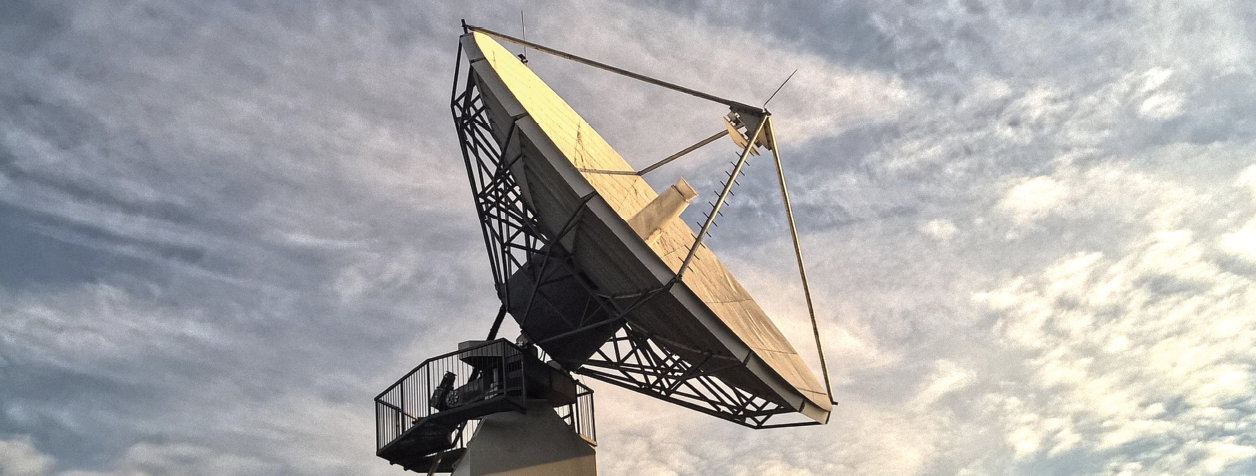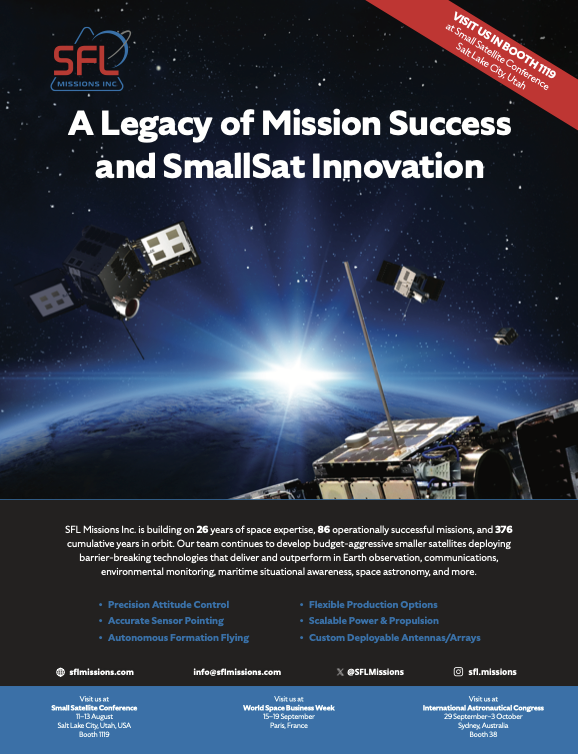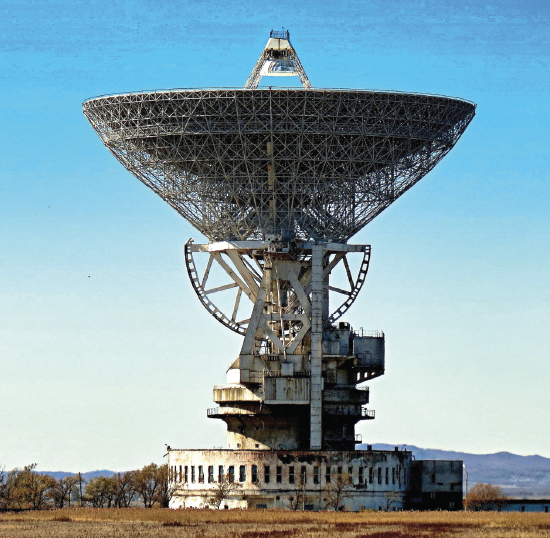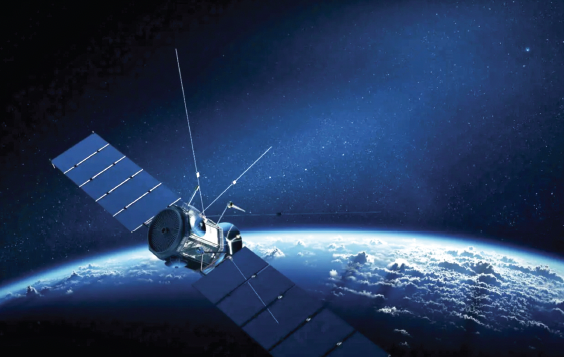The green light for E-band use in emerging satellite networks highlights the industry’s move toward higher frequencies, enabling greater capacity and performance.

Companies such as SpaceX have received the approval to use E-band (71-86GHz) frequencies for its Starlink-network and that is a sign of where the satellite industry is heading.
Once limited by high costs and low production volumes, space technology is progressing alongside the growth of Low Earth Orbit (LEO) constellations and demand for fast, reliable data transmission.
 Michael Guess, mmWave team lead engineer at high-performance technologies leader Filtronic, shares his thoughts about E-band and the future of satellite communication (SATCOM).
Michael Guess, mmWave team lead engineer at high-performance technologies leader Filtronic, shares his thoughts about E-band and the future of satellite communication (SATCOM).
E-band delivers high-capacity, low-latency connectivity ideal for next-generation satellite networks. With access to wide bandwidths in the 71-76 GHz and 81-86 GHz range, it marks a leap in data throughput over traditional frequency bands.
Depending on implementation, E-band can quadruple data capacity to that of other frequency bands, making it suitable for Earth Observation (EO) and SATCOM.
Elsewhere, E-band helps ease spectrum congestion by offering a high-capacity alternative to heavily used and tightly regulated bands such as Ka-band, which make it tough for new operators to secure bandwidth.
With less competition for bandwidth, E-band provides new operators with easier access while enhancing overall network efficiency, especially for backhaul and gateway access. E-band’s high-frequency also enables narrow, high-gain beams, which boosts spectral efficiency and minimize interference. This means that multiple satellites can reuse the same frequencies without excessive signal congestion, which is a significant advantage for LEO constellations that rely on hundreds or even thousands of satellites working together.
__________________
E-Band viability
__________________
New technology comes with challenges, and E-band is no exception. Signals at these frequencies experience greater atmospheric attenuation, weakening as they pass through the atmosphere due to absorption by oxygen and water vapour.
 Generating sufficient power is another obstacle. E-band requires more power than lower-frequency bands, requiring the development of high-efficiency semiconductor technology that keeps signals strong over long distances.
Generating sufficient power is another obstacle. E-band requires more power than lower-frequency bands, requiring the development of high-efficiency semiconductor technology that keeps signals strong over long distances.
Even though LEO satellites operate closer to Earth, they still require advanced RF systems to ensure reliable performance in space. That said, these challenges are manageable.
The shorter transmission distance in LEO helps minimize signal loss, while E-band’s high-gain, narrow-beam properties allow for precise signal focus, reducing interference and improving efficiency.
Meanwhile, advancements in semiconductor technology, combined with innovative engineering design are enhancing power efficiency and enabling high-linearity RF components, supporting advanced modulation techniques for maximum data throughput.
_____________________
Spectrum into scale
_____________________
Beyond this, manufacturing for E-band also presents its own set of challenges. Integrating components into a high-yield, reliable transceiver module is far more complex at these frequencies than at lower bands.
Therefore, achieving scalable, high-performance, repeatable production is a barrier for new entrants, requiring specialized expertise in semiconductor fabrication, RF design and system integration.
 This is where expertise in high-frequency RF technology is required. Filtronic, with more than a decade of experience in E-band development and tens of thousands of deployed modules in terrestrial networks, has been working on solutions to overcome these challenges.
This is where expertise in high-frequency RF technology is required. Filtronic, with more than a decade of experience in E-band development and tens of thousands of deployed modules in terrestrial networks, has been working on solutions to overcome these challenges.
By applying what works in high-frequency terrestrial communications to space applications, the company is focused on improving power efficiency and signal integrity at these demanding frequencies.
One of the biggest areas of innovation in E-band technology has been in semiconductor materials like gallium arsenide (GaAs) and gallium nitride (GaN). These materials are key to developing high-performance power amplifiers that keep signals strong and efficient, even in the harsh environment of space.
Rather than relying on standard, off-the-shelf components, Filtronic designs custom chipsets across the RF spectrum. The company works closely with semiconductor foundries to refine processes and improve design tools, helping to push performance at these high frequencies.
In addition to semiconductor development, a vertically integrated approach that spans the entire RF chain, from chipset design to fully integrated transceiver modules, is implemented.
This level of control allows for fine-tuning at every stage, ensuring that E-band technology meets the technical demands of space applications as well as achieving high-yield, scalable production.
________________________
Regulatory landscape
________________________
As the industry moves toward high-volume manufacturing to support growing LEO constellations, having solutions that are both high-performance and scalable will be key to making E-band a mainstream part of SATCOM.
That’s why we’re seeing major satellite operators and industry disruptors recognizing this technology’s potential for high-data-rate applications, leading to a growing interest and investments in this spectrum.
Regulatory bodies have responded by establishing frameworks that support E-band adoption, easing market entry in some markets through relatively light-touch licensing when compared to the more congested lower-frequency bands that face greater spectrum competition.
Although these factors pose E-band as an attractive option for high-capacity, next-generation satellite networks, the complexity of working at these frequencies is no small feat.
Getting it correct from the start can be the difference between leading the pack or playing catch-up—for companies looking to break into E-band, the smartest approach isn’t going solo.
Partnering with experts who understand the complexities, from high-frequency design to scalable manufacturing, ensures the successful deployment of next-generation satellite communication solutions.
 For more information about Filtronic’s range of components and solutions, visit the company’s website at this direct link. Alternatively, speak to a member of the team at +44 (0)1740 618 800.
For more information about Filtronic’s range of components and solutions, visit the company’s website at this direct link. Alternatively, speak to a member of the team at +44 (0)1740 618 800.
filtronic.com
Filtronic has been at the forefront of RF technologies for 45 years. The company has developed a reputation for innovation, quality and technical knowledge and now specialises in mission critical communications for aerospace and defence, telecommunications infrastructure, space and critical communications.


